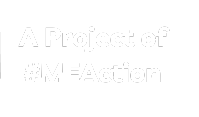Electrohypersensitivity
From MEpedia, a crowd-sourced encyclopedia of ME and CFS science and history
This article is a stub. |
| Electrohypersensitivity | |
|---|---|
| Other names | EHS |
 | |
| Skin lesson caused by electrohypersensitivity. Source: Belpomme and & Irigaray. Int. J. Mol. Sci. 2020, 21(6), 1915. | |
Electrohypersensitivity or EHS is a type of idiopathic environmental intolerance.[1]
Signs and symptoms[edit | edit source]
- skin lesions
Treatment[edit | edit source]
ME/CFS[edit | edit source]
Brussels International Scientific Declaration on EHS and MCS[edit | edit source]
In 2015, the 5th Paris Appeal Congress at the Royal Academy of Medicine published a declaration on MCS and electrohypersensitivity[2] which stated:
| “ | "The nocebo effect is not a relevant nor a valid explanation when considering scientifically valuable blind provocation studies, since objective biological markers are detectable in patients as well as in animals." | ” |
—5th Paris Appeal Congress of May 18, 2015 at the Royal Academy of Medicine, Brussels International Scientific Declaration on EHS and MCS (2015) | ||
Notable studies[edit | edit source]
- 2015, Brussels International Scientific Declaration on EHS and MCS [2] (Full text)
- 2020, Electrohypersensitivity as a Newly Identified and Characterized Neurologic Pathological Disorder: How to Diagnose, Treat, and Prevent It[1](Full text)
See also[edit | edit source]
Learn more[edit | edit source]
References[edit | edit source]
- ↑ 1.0 1.1 Belpomme, Dominique; Irigaray, Philippe (January 2020). "Electrohypersensitivity as a Newly Identified and Characterized Neurologic Pathological Disorder: How to Diagnose, Treat, and Prevent It". International Journal of Molecular Sciences. 21 (6): 1915. doi:10.3390/ijms21061915. PMC 7139347. PMID 32168876.
- ↑ 2.0 2.1 Declaration from the 5th Paris Appeal Congress of May 18, 2015 at the Royal Academy of Medicine (2015). "Brussels International Scientific Declaration on EHS and MCS" (PDF). Brussels, Belgium.
The nocebo effect is not a relevant nor a valid explanation when considering scientifically valuable blind provocation studies, since objective biological markers are detectable in patients as well as in animals.

